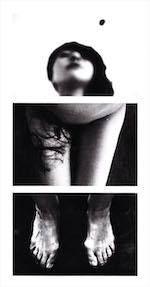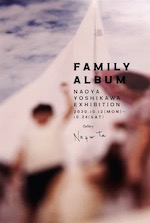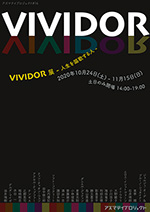 |
Picks is a monthly sampling of Japan's art scene, offering commentary by a variety of reviewers about exhibitions at museums and galleries in recent weeks, with an emphasis on contemporary art by young artists.
Note: Most of Japan's museums and galleries have reopened, but conditions and anti-coronavirus precautions vary. If you are planning a visit, please check the venue's website beforehand. |
 |
 |
 |
15 December 2020 |
 |
| 1 | 2 | |
 |
|
 |
 |
|
|
 |
 |
| Sagacho Exhibit Space 1983-2000 |
| 12 September - 13 December 2020 |
The Museum of Modern Art, Gunma
(Gunma) |
 |
|
Established museums and galleries have never supported the existence of alternative spaces in Japan, yet one in particular, the Sagacho Exhibit Space, survived on its own for 17 years, thanks largely to the vision and drive of its director, Kazuko Koike. In this unique venue -- a converted auditorium in a former rice warehouse -- she nurtured a remarkable roster of emerging artists who went on to fame at home and abroad. This homage to Sagacho (in a museum no less) showcased 41 works by 25 of those artists, as well as a set of photos commemorating every one of the 106 exhibitions held in the space -- in effect providing, as this show's subtitle puts it, a "Fixed-Point Observation of Contemporary Art" in Japan. (For a detailed review see the 1 December issue's Here and There.)
|
|
|
 |
 |
 |
| Ruriko Taguchi Photo Exhibition: CUT OFF |
| 29 October - 15 November 2020 |
Communication Gallery Fugensha
(Tokyo) |
 |
| Photographer Taguchi says it suddenly occurred to her to have a hairdresser come to her home and cut off her long hair while she was naked, and to record the process. The resulting series perfectly embodies the blend of spontaneity and chance giving rise to unexpected vignettes that is a distinctive attribute of photographic expression. Taguchi writes, "When we cut our nails or hair, in that instant what had been part of us becomes something separate and unwanted, transforming into waste or filth." When you think about it, this is indeed a strange phenomenon. The photos successfully convey the peculiar energy of hair as a foreign substance. |
|
|

|
 |
 |
|
 |
 |
 |
| Yoshinori Marui: Apparition |
| 15 October - 5 December 2020 |
PGI
(Tokyo) |
 |
| Photographer Marui takes his interpretation of the word "apparition" from the philosopher Theodor Adorno, who defines it as a "heavenly vision." As Marui describes it, "A star is born, and suddenly its light replaces utter darkness" -- a phenomenon to which he likens the photographic process. Everyday objects suddenly appear in front of the camera, then just as quickly move out of frame to vanish forever. Just as we see chance arrangements of stars in the sky -- some of them long dead -- as constellations, we find ourselves seeking the invisible threads that link the seemingly unrelated images in this show.
|
|
|
|
|
|
|
|

|
 |
 |
 |
 |
| The Japan Fine Arts Exhibition |
| 30 October - 22 November 2020 |
The National Art Center, Tokyo
(Tokyo) |
 |
| This reviewer has been going to the venerable show commonly known as Nitten since 2000, and very little about it has changed from year to year. The Western-style paintings seem darker than the Japanese-style Nihonga, perhaps due to a predominance of portraits in which the subjects are static and expressionless. They exude no vitality, just stagnation and an odor of death -- no wonder they feel dark. Strangely, too, in a year that has begun and ended with the coronavirus, there are hardly any depictions of masks. The contrast with those in attendance, who were uniformly masked, was, in a word, stark. But that's Nitten in a nutshell: aloof from and unmoved by the world outside. |
|
|
 |
 |
| Kento Kiyono: Jigokudani Snow Monkey |
| 23 October - 3 November 2020 |
Nikon Salon
(Tokyo) |
 |
| Jigokudani Monkey Park, in the northern Nagano Prefecture town of Yamanouchi, is a celebrated go-to spot for animal photography buffs who love to snap the wild monkeys as they bathe in the hot springs or engage in snowball fights. Kiyono's camerawork, while resolutely orthodox, at the same time appears to be seeking to break new ground in the snow-monkey snapshot genre. His dedication to the classic monochrome print yields painterly images that might properly be called portraits, so eloquently do they bring out the individuality of his simian subjects. |
|

|
 |
 |
 |
 |
 |
Toshiki Nakanishi: Kamuy |
19 September - 31 October 2020 |
Canon Gallery S
(Tokyo) |
 |
| In Japan, past generations of landscape photographers have tended to adhere to the traditional "flower-bird-wind-moon" aesthetic that treats Nature as a delicate, bonsai-like thing. In these images shot in the primeval forests of Hokkaido, Nakanishi works on a different scale altogether. Here he juxtaposes the natural patterns formed by tree bark, lichens, and fungi with decorative patterns created by the indigenous Ainu and the ancient Jomon people. Since time immemorial, human beings have incorporated Nature's designs into their pottery, weavings, and ornamentation, and Nakanishi does a brilliant job of exploring that relationship through his photographs. |
|
|
 |
 |
 |
| Naoya Yoshikawa: Family Album |
| 12 - 24 October 2020 |
Gallery Nayuta
(Tokyo) |
 |
| In the wake of the Great East Japan Earthquake of 2011 and his own mother's death, Yoshikawa began duplicating photos from his family's albums in a quest for "a narrative of my self." However, the works in the titular series are not mere copies. Yoshikawa skews the images, cuts out all but one part, or blurs some areas while leaving the rest in focus. In this manner he reconstructs family memories into a new narrative, in what is a superb experiment in the critical reinterpretation of photography. |
|
|
|
|
|
|
 |
 |
| Project #16: Vividor |
| 24 October - 15 November 2020 |
Azumatei Project
(Kanagawa) |
 |
| The 16th in a series of projects produced by artist Jun Azumatei, this one consisted of an omnibus of videos in a small room on the second floor of an old building on the edge of Yokohama's Isezaki Mall. The entire sequence ran to 2 hours 10 minutes, but each of the 29 works was less than 5 minutes long. Leading off was Eross Istvan's Dialogue, in which a white man and a black man take turns throwing white flour at each other, but few of the other pieces were so obviously metaphorical. Among the other artists: Mitsuhiro Kurashige, Koji Tsujigo, Daniel Goettin, and Super-Concrete (Azumatei's performance duo with Kota Saito).
|
|
 |
|
|
|
 |
|